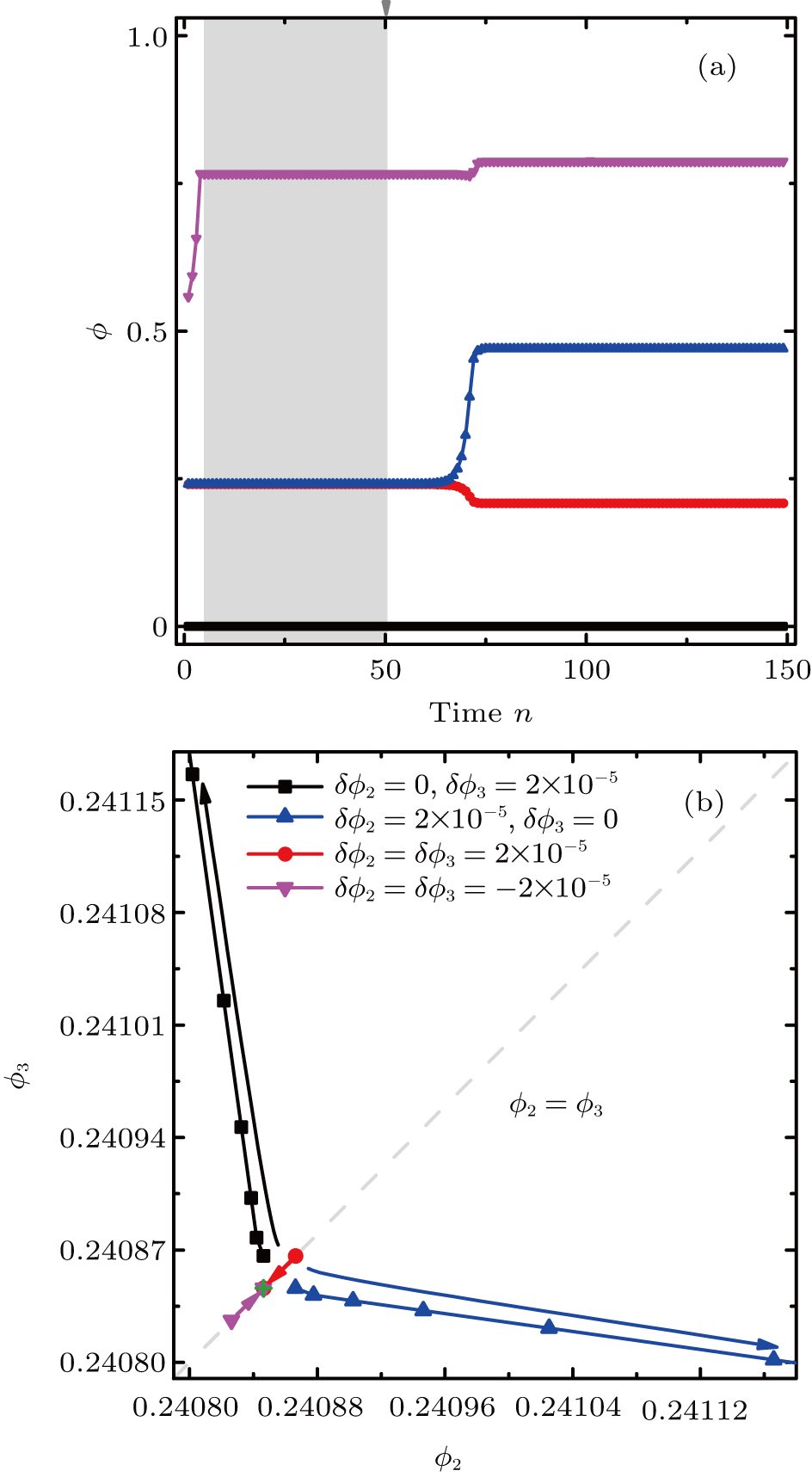Attractors with controllable basin sizes from cooperation of contracting and expanding dynamics in pulse-coupled oscillators
Project supported by the National Natural Science Foundation of China (Grant Nos. 11502200 and 91648101) and the Fundamental Research Funds for the Central Universities, China (Grant No. 3102018zy012).
(a) An unstable attractor highlighted in gray is located with a randomly selected initial condition in four globally coupled oscillators. The four curves represent the states of the four oscillators respectively, which are recorded just after the n-th reset of the reference oscillator 1. Upon the perturbations introduced at the arrow position, the system will leave the attractor, indicating its unstable nature. (b) The dynamics in the (ϕ2, ϕ3) is shown, the existence of the two simultaneous active firing oscillators 2 and 3 is responsible for the unstable dynamics. The “+” denotes the unstable attractor. The different perturbations on oscillators 2 and 3 can split the simultaneous firing and make the system leave the unstable attractor (similar to the unstable manifold of a saddle). While the perturbations with δ ϕ2 = δ ϕ3 cannot split the simultaneous firings and the system can lead to the unstable attractor (similar to the stable manifold). The parameters are chosen as N = 4, b = 3, ε = 0.15, and τ = 0.2.
